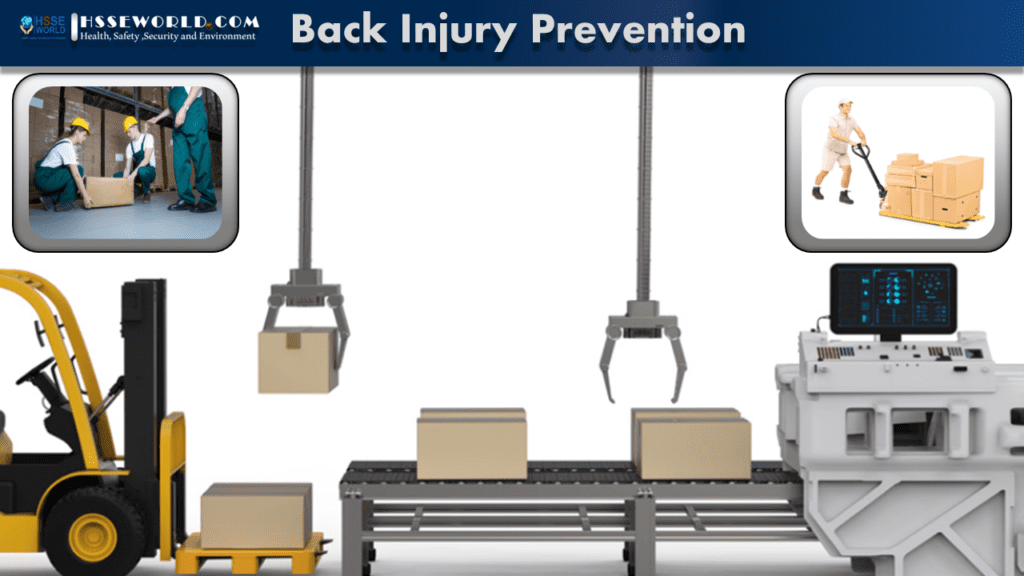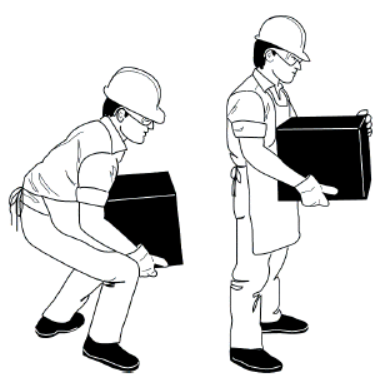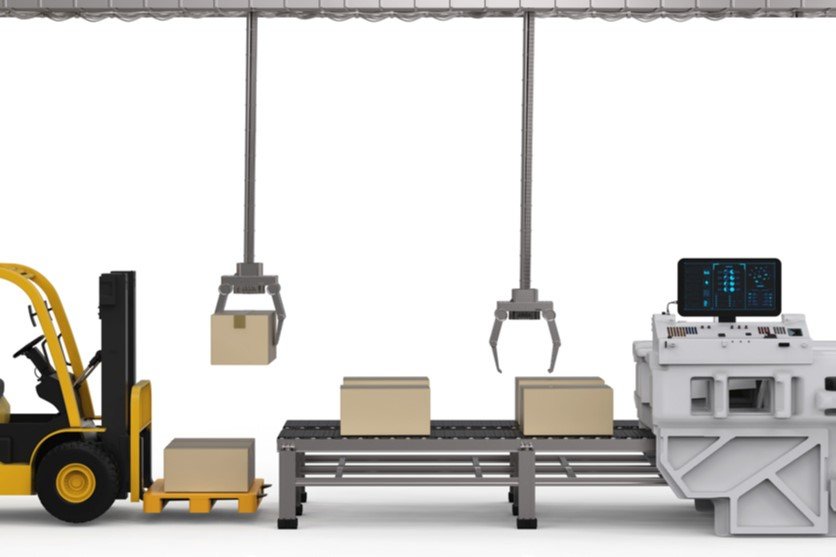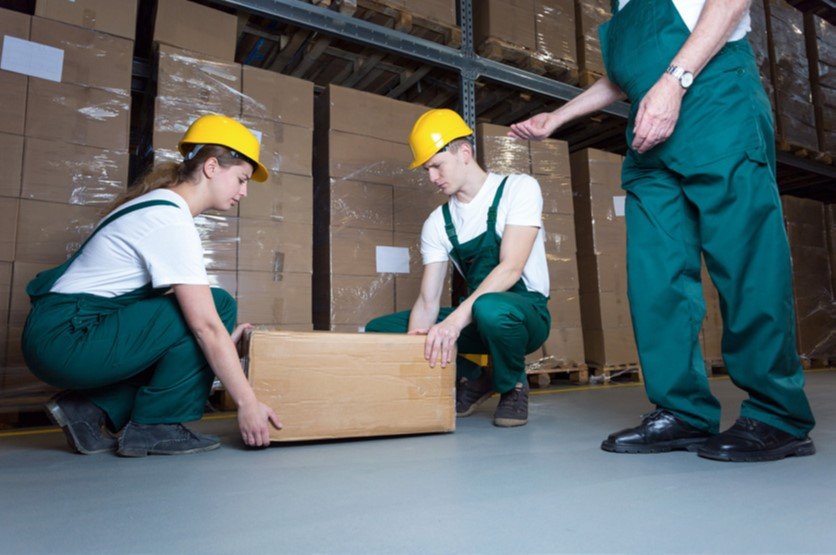Back Injury Prevention
8 min readEverything we do affects our back. Unfortunately, the back is not very resilient. Once the back has been injured, it will never be as strong as it was before the injury. How many times a day do we lift, push, pull, stretch, and otherwise put a strain on our back? Prevention is the key to back Injury Prevention during these activities.
The back is the body part most often hurt in work-related injuries with lost time. The bones, discs, joints, ligaments, and muscles in the back are vulnerable to pain and injury when not used properly. Help employees keep their backs healthy and pain-free with these basic rules for proper posture, exercise, and lifting.
This article provides information on proper care for the back to help reduce the potential for back injuries in the workplace and at home.
Also Read: Tool Box Talk: Heart Risks: AEDs and CPR in the Workplace

Body Mechanics
Body mechanics is the proper way to move and position the body for different activities in order to prevent injuries. It is important to remember that our bodies do not stop functioning when we go home from work. We need to follow the same guidelines both at work and at home.
The natural position of the back is an “S” curve. This is referred to as the neutral position. To keep a neutral position and for good posture, we need to learn to maintain a straight line, from the midline of the ears – to the shoulders – to the midline of the hips – to the midline of the knees – to the midline of the ankle. This means standing tall, pulling on our stomachs, and tightening our buttocks. Think of it as a plumb line from the ears to the knees. This will keep our back in a natural “S” curve. Our back needs to be maintained in a neutral position when sitting, standing, sleeping, reaching, and pushing.
Many of us spend a large part of our day sitting. Sitting increases weight on the spine. Slouching can place additional pressure on the back. Some possible solutions for proper sitting might include:
- have a chair with maximum adjustability;
- maintain a neutral position;
- move frequently (take micro-breaks); and
- have adjustable work surfaces.
If your job includes long periods of standing, you should place one foot on a footrest. This technique raises the front of the pelvis and reduces the possibility of a swayback condition.
Alternate from one foot to the other frequently. Adjust your work surface height to keep from bending over while working. If your work area is a cubicle, you can adjust the desk height. If you have a regular desk, and cannot find a way to correct the height, adjust your chair to fit the desk
and use a footrest. When arranging your work area or the company storage room, consider each object carefully in order to avoid reaching overhead or bending over. Think about how often the object
is used as well as the weight of the object. The best lifting zone is between the shoulders and waist. Place heavy and frequently used objects near waist height to reduce bending and twisting to reach the object. Place lighter objects higher or lower. Use dollies or carts to move heavy objects rather
than carrying them.
Pushing an object is much better for your back than pulling it. If you push, you can see over your load and use your legs, not your back. Keep the object in front of you and stay as close to the object as possible, as this gives you more control
and direction.
Sleeping is very important to maintain physical and mental health. Most of us sleep between 6-8 hours per day. Even while asleep, you can injure your back if you do not maintain good back posture. To sleep properly you need to:
- Use a firm mattress.
- Avoid sleeping on your stomach. This can cause the back to sway.
- Place a pillow under your knees when sleeping on your back.
- When sleeping on your side, place a pillow between your knees and keep your knees bent.
Changing Lifestyle
Some simple changes to your lifestyle can help protect your back from injury. When attempting to change your lifestyle, be realistic. A little bit of change is better than none at all. Try making small changes over a period of time.
Make a commitment to walk around the block every day as opposed to running five miles. Regularly strengthen your stomach muscles, lose a little weight, and increase your flexibility. Cut down on your food portions rather than going on a liquid or strict diet. Be willing to try something different – new recipes, new sports, meditation, or low-impact aerobics. exercise can help you
Tool Box Talk: Back Sprains and strains
Strain or Sprain?
Strain and sprain both mean something has been stretched beyond its limits. A strain refers to a muscle. When a muscle is strained, it has been forced to exceed its ability to work.
Regular exercise can strengthen muscles and allow them to work harder and longer, which is important considering muscles are the spine’s workhorses.
A sprain can occur in ligaments (fibrous bands connecting bones together) or in tendons (bands of tissue attaching muscles to bones). A sprained ankle is a common example of a sprained ligament. The symptoms of strains and sprains are sudden, sharp, and persistent pain at the injury site followed
by swelling.
Also Read: Sprains & strains
Common Lifting Mistakes
Some common lifting mistakes are:

- Bending forward at the waist with legs straight. When you bend forward at the waist with legs straight, you require the use of the muscles in your lower back and the weight of the object being lifted will include the weight of your upper body.
- Using fast jerky motions. This puts stress on your lower back muscles and may cause sprains and strains.
- Bending and twisting when lifting force the spine into a position of weakness and remove the natural “S” curve of strength from the lifting process.
- Handling the load too far away from the body. The back is like a lever system. The distance between the load and the fulcrum (point of support) can be considered the distance between the body and the object being lifted.
- Failure to plan the lift. You need to check the path of travel to be sure it is clear. Size up the load and if it is too heavy or bulky for you to lift alone, ask for help.
66 Safety Tips at work-Safety Moment#17
Eight Steps to Proper Lifting

There are eight steps to follow in doing a safe lift. They may seem very simple but if you do all of them each time you lift, your chances of an injury will be greatly diminished. When you do a lift, make sure you:
- Size up the load – check to ensure the load is stable and balanced. Test the weight. Try moving it with your foot, if you cannot, you probably need
to ask for help. - Plan the job – consider all possibilities. Is the path clear? What is the weight of the load? How much stress will be placed on your back? Is there traffic, a tripping hazard, a doorway to go through, or a stairway to go up or down? Avoid carrying an object that requires two hands to hold, either up or especially down, a flight of stairs. Use the elevator. Plan a rest stop, if needed.
- Establish a base of support – use a wide, balanced stance with one foot in front of the other. Make sure you have firm footing and that your feet are shoulder-width apart. This staggered stance gives you the stability of not falling over and being able to secure the load.
- Bend your knees, keep your heels off of the floor and get as close to the object as possible. Always lift with your legs and not your back.
- Get a good grip on your palms and make sure you have an adequate hold on the object. Be certain you will be able to maintain a hold on the object without having to adjust your grip later. You can use gloves to help maintain an adequate grip, but don’t rely on gloves because they can de-sensitize the fingers making you unable to feel the object.
- Lift gradually with your legs without using jerky motions. By using your leg strength, your chance of lower back injury is greatly reduced.
- Keep the load close to prevent arching your lower back. As you begin the lift, tighten your stomach muscles and keep your head and shoulders up. The closer the load is to your spine, the less force will be placed on your back.
- Pivot – don’t twist. Move your feet in the direction of the lift. This will eliminate the need to twist at the waist.
Also Read: Photo of the day: Safe Lifting at work
At Work
- Maintain good posture. Slouching and other awkward postures can strain joints and ligaments. Whether employees sit or stand, they can reduce stress on the back with a neutral posture (the back’s natural ‘S’ curve).- Remind employees to sit without slouching and to stand tall, with head up and shoulders back. – Try changing work heights so employees can handle items with their backs in the correct position. – When driving, an employee should keep his or her back straight against the seat and close enough to the wheel so that knees are bent and slightly higher than hips.

- Reduce repetition. Discourage repeated, sustained motions that put stress on back muscles and joints and cause fatigue and injury, especially when combined with excessive force or poor posture. Use materials-handling devices, such as carts, skid loaders, conveyor systems, robotics, or sliding racks. Let employees vary their tasks and body positions throughout the day and let them take frequent stretch breaks.
- Establish a safe lifting policy. Develop procedures and training to let employees know how to lift correctly to avoid back injuries.-
- Train employees to plan a lift in advance by considering the object’s weight and the distance it will be moved. If an object is too heavy, awkward, or bulky for one person to lift safely, use a two-person lift or mechanized lifting methods, such as a cart or dolly, or divide the load.

- Assess whether any hazards should be eliminated before lifting. For example, make sure the work area has enough space to move freely. The area should be dry; even; and have stable flooring and enough light. –When possible, push materials instead of lifting them.
- If employees must lift an object, they should:
- Align themselves in front of the load with their feet straddling it, one foot slightly in front of the other for balance. Then they should squat slowly, bending the knees instead of the back and stomach. Using both hands, an employee should grab the load firmly and bring it as close to the body as possible to distribute the load’s weight over the feet.
- Tighten stomach muscles to help protect the lower back.
- Lift with the legs, not the back. With the load close to the body, an employee should slowly straighten his or her legs until upright. Make sure the load isn’t blocking the view before walking slowly toward the destination. Move the feet, not the waist, to turn to the side.
- Finally, set the load down correctly. After reaching the destination, employees should reverse the above steps. If setting the load on the ground, they should squat by bending the knees and positioning the load in front of the body. If setting the load down on a table, they should do so slowly and keep contact with the load until it is securely on the surface.
Also Read: Managing The Risk Of Sudden Cardiac Arrest
Please visit our Safety Resources SAFETY BAG to have many Safety Resources




